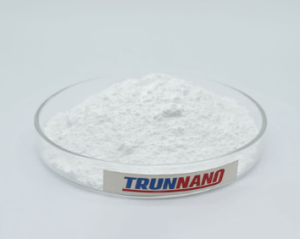Within the diverse landscape of industrial compounds, Sodium Silicate stands out due to its extensive use in various sectors, raising significant inquiries about its safety profile, especially concerning human health. This multifaceted compound, often recognized by its common moniker "water glass," has a ubiquitous presence, from being an essential component in detergents and adhesives to its role in the construction sector, particularly in concrete additives. Understanding the implications of sodium silicate on human health necessitates an in-depth exploration of its properties, uses, and the regulatory frameworks overseeing its application.
Sodium silicate, a substance found in instant sodium silicate powder, presents as a unique entity within the chemical industry. Its distinctive properties make it a preferred ingredient in a plethora of products and industrial applications. However, the question of its safety in direct or indirect contact with humans often surfaces, compelling professionals and consumers alike to seek evidence-based assessments of potential health risks.
Engaging with this compound's safety begins by analyzing its Material Safety Data Sheets (MSDS), which provide vital information regarding toxicity, health hazards, and necessary precautions. These data sheets, prepared by manufacturers and upheld by regulatory authorities, reveal that sodium silicate solutions can be irritant in their basic form, especially when contact occurs with the skin, eyes, or respiratory system. Therefore, appropriate handling, storage, and disposal practices become paramount in industrial and laboratory settings to mitigate health-related incidents.

Further delving into its interaction with human health, it becomes evident that the route of exposure is a critical determinant of sodium silicate's safety. Industrial workers, for instance, are more likely to encounter its irritant nature, necessitating personal protective equipment (PPE) during handling. Contrarily, the general populace might get exposed through household cleaning products containing sodium silicate, underscoring the importance of following usage instructions to avoid irritations or injuries.
Moreover, the compound's role in the food processing industry as an anti-caking agent brings to light another dimension of human exposure. Regulatory bodies like the U.S. Food and Drug Administration (FDA) have set permissible limits on its concentration in food products, emphasizing its non-toxic nature when consumed within the recommended thresholds.
Evaluating comprehensive research studies and toxicological data underscores that the systemic toxicity of sodium silicate is relatively low. It does not classify as a carcinogen, and there is minimal risk of bioaccumulation, reducing long-term health concerns. However, it is essential to recognize that individual sensitivity can vary, highlighting the necessity for caution and adherence to recommended safety practices.
Assessing the balance of its utility and potential hazards, the consensus tilts towards sodium silicate being safe for humans when respect for specific protocols is in place. Industrial and household users, informed by regulatory guidance, can continue to harness the benefits of Sodium silicate with confidence in its low-risk profile. The emphasis, therefore, remains on education, appropriate safety mechanisms, and regulatory adherence to ensure that the intersection between human health and this prevalent compound remains within the realms of safety.